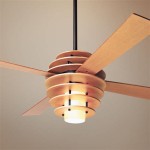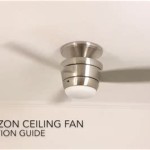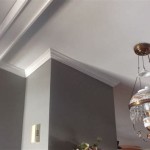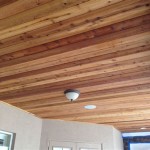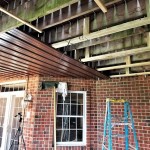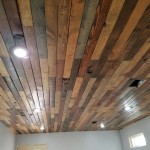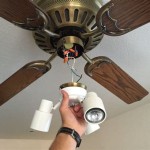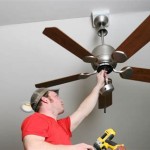False Ceiling Vs Suspended Floor: Which Is Better?
When planning a construction project, the choice between a false ceiling and a suspended floor can significantly impact the aesthetic appeal, functionality, and overall cost of the building. Both systems offer distinct advantages and disadvantages, making it crucial to understand their characteristics before making a decision. This article will provide a comprehensive comparison of false ceilings and suspended floors, exploring their strengths, weaknesses, and suitability for various applications.
False Ceiling: A Versatile and Economical Option
A false ceiling, also known as a dropped ceiling, is a secondary ceiling constructed below the main structural ceiling. It typically comprises a lightweight frame, often made of metal or wood, supporting panels of various materials such as gypsum board, acoustic tiles, or PVC panels. False ceilings are highly versatile and can be customized to suit diverse design requirements.
Here are some major advantages of false ceilings:
- Cost-Effective: False ceilings are generally more affordable than suspended floors, especially for large areas. The use of lightweight materials and simpler construction methods contribute to the lower cost.
- Aesthetic Flexibility: They allow for a wide range of design possibilities, including different shapes, colors, and textures. This versatility enables homeowners and architects to create visually appealing and personalized spaces.
- Concealed Wiring and Plumbing: False ceilings provide a convenient way to hide electrical wiring, plumbing pipes, and ductwork, creating a clutter-free and aesthetically pleasing appearance.
- Improved Acoustics: Some false ceiling materials, such as acoustic tiles, can effectively absorb sound, reducing noise levels and improving the acoustics of a room.
- Easy Installation and Maintenance: False ceilings are relatively easy to install and maintain. Access panels can be provided for repairs or modifications, simplifying the process.
However, false ceilings also have some drawbacks:
- Reduced Ceiling Height: Installing a false ceiling lowers the overall ceiling height, which can make rooms feel smaller and claustrophobic, especially in spaces with low ceilings.
- Limited Load Capacity: False ceilings are typically not designed to carry significant weight, making them unsuitable for heavy fixtures or equipment.
- Fire Safety Concerns: Some false ceiling materials, particularly those made from plastic or foam, can pose fire hazards. It is essential to choose fire-resistant materials.
- Limited Ventilation: False ceilings can restrict air circulation, potentially leading to moisture buildup and mold growth if not adequately ventilated.
Suspended Floor: Enhancing Functionality and Aesthetics
A suspended floor, also known as a raised floor, consists of a raised platform supported by pedestals or columns. It provides a space between the floor and the structural floor, allowing for the easy access and management of electrical wiring, data cables, and other utilities. Suspended floors are commonly used in commercial buildings, data centers, and office spaces.
Here are some significant advantages of suspended floors:
- Excellent Structural Integrity: Suspended floors offer superior load-bearing capacity compared to false ceilings, making them suitable for supporting heavy equipment, furniture, and machinery.
- Enhanced Accessibility: The space created by the suspended floor provides easy access to utilities, simplifying maintenance, repairs, and upgrades. This accessibility also allows for the installation of additional wiring or cabling as needed.
- Improved Air Circulation: The gap between the floor levels facilitates better air circulation and ventilation, preventing moisture buildup and promoting a healthier environment.
- Fire Safety: Suspended floors typically use non-combustible materials, enhancing fire safety and minimizing potential fire hazards.
- Acoustical Benefits: Some suspended floor systems incorporate acoustic panels, providing sound insulation and reducing noise transmission.
However, suspended floors also have some disadvantages:
- Higher Cost: Suspended floors are generally more expensive than false ceilings, mainly due to the complex construction methods and the use of robust materials.
- Reduced Floor Space: The raised platform reduces the available floor space, which can be a concern in small areas.
- Aesthetic Limitations: Suspended floors offer less flexibility in terms of design compared to false ceilings. They are typically constructed with a uniform appearance, limiting creative possibilities.
- Structural Complexity: Suspended floors require extensive structural support, adding complexity to the construction process.
Key Considerations for Choosing Between False Ceiling and Suspended Floor
The decision between a false ceiling and a suspended floor depends on several factors, including:
- Budget: False ceilings are generally more cost-effective, while suspended floors are more expensive.
- Floor Space: Suspended floors reduce available floor space, making them unsuitable for smaller areas. False ceilings are a better option in such cases.
- Load Capacity: Suspended floors offer higher load capacity, making them suitable for heavy equipment and furniture. False ceilings are not designed for heavy loads.
- Aesthetic Requirements: False ceilings offer greater design flexibility, allowing for customization and personalization. Suspended floors have a more uniform appearance.
- Accessibility and Maintenance: Suspended floors provide better accessibility for utilities, simplifying maintenance and upgrades.
It is essential to consult with a qualified architect or engineer to determine the most suitable solution for your specific needs and project requirements.

False Ceiling Vs Suspended Galaxy Insulation

Pop Vs Gypsum False Ceiling Which Is Better

Floors And Ceilings Under One Roof

False Ceiling Problems In Buildings Envista Forensics

Drop Ceilings Birmingham Al Drywall Or Basement Ceiling Which Is Best

False Ceilings In Singapore Pros And Cons Design Ideas

Suspended Ceilings Vs Mf What S The Difference Ct

Suspended Ceilings In Escape Routes Fire Risk Assessments Safelincs Safety Forum

False Ceiling Problems In Buildings Envista Forensics

Drop Ceiling Or Drywall Which One Should You Choose
Related Posts

